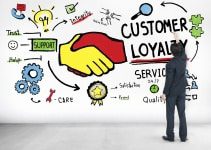With industries constantly changing due to technological advancements, economic shifts, and global challenges, businesses need employees who can thrive in uncertainty. As organizations strive to build resilient workforces, human resources professionals are turning to assessments to identify candidates and employees who excel in adaptability. Below are nine critical points on how assessments are vital in building a workforce ready to face future challenges:
1. Importance of adaptability in modern workplaces
The modern work landscape is constantly changing, driven by innovations like automation, remote work models, and artificial intelligence. In this climate, organizations require individuals who can adjust to new responsibilities, work environments, and challenges with minimal disruption. Adaptable employees are quick learners and effective problem-solvers who thrive on ambiguity. Their ability to respond positively to change makes them critical assets in an era where flexibility is often the difference between success and failure.
2. Adaptability as a marker of resilience
Adaptability and resilience are closely linked traits. Employees who are adaptable demonstrate emotional and psychological resilience, enabling them to recover quickly from setbacks. They are less likely to feel overwhelmed by unexpected roles or business environment shifts. Organizations can better withstand crises and disruptions by building a workforce composed of adaptable individuals, maintaining productivity and morale during tough times.
3. The role of assessments in identifying adaptability
Traditional hiring processes often focus on technical skills, educational background, and work experience, overlooking softer skills like adaptability. This is where assessments come into play. Through structured assessments, HR professionals can gain insights into a candidate’s ability to handle change, respond to stress, and thrive in dynamic environments. Assessments help reduce the guesswork involved in hiring and employee development, allowing businesses to focus on individuals with the right mindset for growth and flexibility.
4. Types of assessments used to measure adaptability
Behavioral assessments, such as personality tests can provide insights into how individuals are likely to respond to change and challenges. Cognitive assessments can gauge problem-solving abilities and how well individuals handle novel situations. Additionally, situational judgment tests simulate real-world challenges to observe how a candidate would react.
5. Benefits of early identification of adaptable employees
Highly adaptable employees are more likely to take on leadership roles, as they can navigate uncertainty and guide teams through complex transitions. They are also better suited for lateral moves within the company, helping bridge skills gaps across departments. By investing in employees who demonstrate adaptability, companies foster a culture of growth and innovation, enabling quicker responses to market changes.
6. Assessments for ongoing employee development
Adaptability isn’t just a trait required at the hiring stage; it’s also crucial for long-term career success. By continuously evaluating employees’ adaptability through performance reviews, 360-degree feedback, and self-assessments, HR can identify areas for growth and provide targeted training. This proactive approach ensures that employees remain equipped to handle evolving responsibilities, preventing stagnation and burnout.
7. Adaptability in leadership roles
Adaptability is particularly critical in leadership roles, where rapidly changing circumstances often influence decision-making. Leaders who are adaptable can manage crises more effectively, inspire confidence in their teams, and implement strategic changes smoothly. Leadership assessments focusing on adaptability can help organizations identify potential leaders who possess technical expertise and the emotional intelligence and flexibility required to lead in uncertain times.
8. The impact of adaptability on team dynamics
Adaptable employees are often strong collaborators who are open to different perspectives and comfortable with shifting responsibilities. In contrast, less adaptable team members may struggle with change, creating team friction and slowing progress. Assessing adaptability during the hiring process can help HR professionals build teams that are diverse in skills and agile in their problem-solving approach. This creates a more dynamic work environment where innovation can flourish.
9. Building a culture that encourages adaptability
Companies that embrace continuous learning, offer flexibility in work styles, and support risk-taking are more likely to see their employees thrive in change. Encouraging a culture of feedback, mentorship, and cross-functional collaboration also helps employees develop adaptability as an ongoing skill, benefiting both the individual and the organization in the long run.
Conclusion
Adaptability is crucial in today’s fast-changing work environment, and assessments play a key role in identifying employees who excel at handling uncertainty and challenges. By using these tools, HR professionals can uncover candidates with the flexibility to thrive amid change, enhancing both individual and organizational resilience. However, building a truly adaptable workforce requires more than just identification—it demands a workplace culture that promotes continuous learning, flexibility, and innovation. Through a combination of assessments and supportive environments, companies can ensure their teams are equipped to succeed in an unpredictable future.




